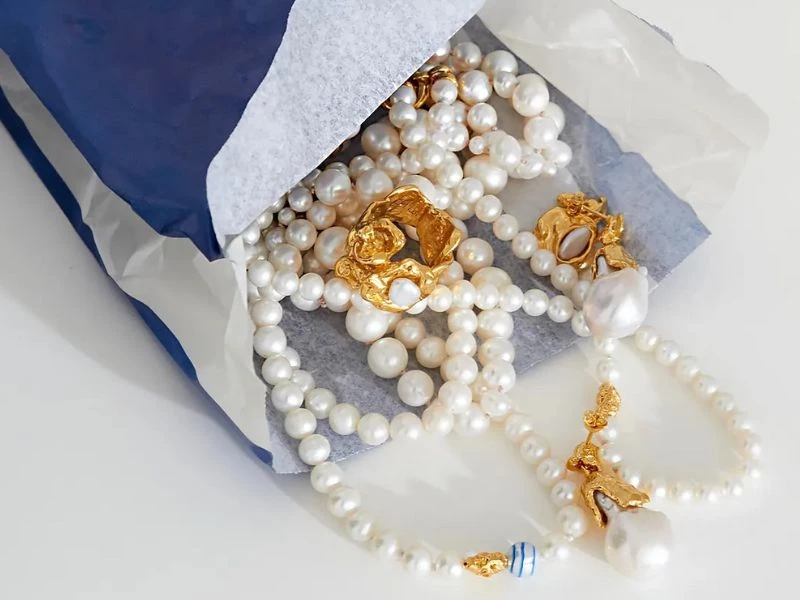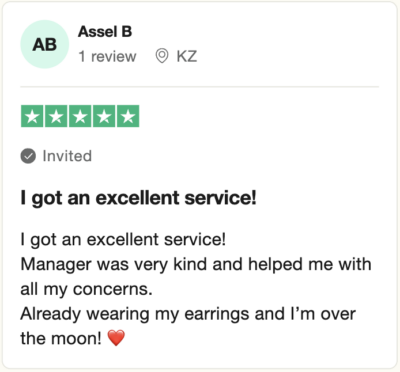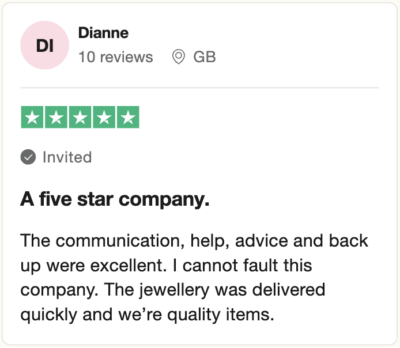16 Most Popular Questions About Pearls

Is it true that almost all pearls today are grown on special pearl farms? That is, they are man-made and not gifts of nature?
Yes, it is true. About 95% of all pearls in the world are cultured pearls. And they are indeed grown on pearl farms. However, its properties are every bit as good as those of pearls that have been found that have been fished directly from oysters. Both sea and freshwater pearls are cultured. The most valuable of the pearls cultivated today are those from the South Seas.
Why did pearls begin to be cultured?
In the middle of the 20th century in many countries, there was a ban on fishing and mining of natural pearls. The fact is that due to active human activity, the ecology of the regions deteriorated. This is the first thing. And the second – some species of mollusks were on the verge of extinction, and therefore it was decided to switch to the format of pearl cultivation.
How long does it take for pearls to appear on a farm? The same amount of time as in nature?
In nature, the mollusk itself determines how long it takes for a pearl to grow. But if it is pearl cultivation, then it is man who decides for the mollusk. This process looks like this. For culturing, a three-year-old oyster is used, which has been in a special nursery or just a three-year-old oyster. A small nacre or a small piece of the mantle of another mollusk is planted in this oyster. The mollusk’s defence mechanisms perceive this object as a threat to life. And the oyster begins to bury this object with nacre, thus defending itself against it. And in the place where the nacre burial takes place, a pearl begins to form. In terms of time, this can take anywhere from a few months to even 10-12 years.
How do natural and cultured pearls differ?
Cultured pearls are usually grown already round in shape. During the growing process, the farm’s employees specially check how well the pearl grows in the mollusk and thus adjust this parameter. And natural pearls can more often be irregularly shaped. And that is certainly what makes it different.
Are there any natural pearls that are still being harvested in the old-fashioned way and not cultivated today?
Of course, there are such regions with pearl fishing. For example, the state of Bahrain, where 95% of pearls are caught in clams the old-fashioned way. In the Persian Gulf, near the coast of Japan, they also catch such pearls, but its percentage on the global market is no more than 5%. These are the most expensive pearls. And it is sold at international exhibitions or even at private auctions. It can be round, oval or baroque irregular shape. By the way, the baroque shape is valued very highly.
What is the difference between sea pearls and freshwater pearls?
The difference between sea pearls and freshwater pearls is, first of all, in the pools where these pearls are grown. These can be lakes or seas and oceans, i.e. salt water. Certainly, sea pearls are larger and the thickness of the pearl layer on the nucleus is several times higher than that of freshwater pearls. The life expectancy of such pearls is certainly longer. And it is tens or hundreds of times more expensive. In pearl jewellery, the price will not differ so significantly, because the cost of pearls is only one of the criteria that determine the price of a piece of jewellery. All other things being equal, a piece of jewellery with freshwater pearls is on average 10 times cheaper than one with sea pearls.
What colours do pearls have? And what does its colour depend on?
Pearls can be of quite a variety of shades and it depends solely on the colour of the mantle of the shell itself. For example, if the inner shells of mollusks are gold coloured, the pearl will also be golden. And if, for example, the shell of a mollusk had shades of colour like petrol films, then the pearl will also be this blue-purple-green, i.e. like petrol films. Pearls have an infinite number of shades and colours. These include white pearls, peach tones and other light colours. There can also be dark pearls (such as Tahitian pearls) – green-blue shades, almost black. There can be golden pearls and even silver pearls. There is, for example, the rare abalone pearl, which is grown in a mollusk called a galleon. Its hue is unique because it’s really like a petrol film – blue-purple and green hues. It’s really incredible looking. And there are also, for example, rare pearls like the Kong pink pearl or, for example, the Melo bright orange pearl.
Is it true that pearls are the only precious mineral that does not require processing?
You might say so. Indeed, once pearls are fished (whether farmed or not), they can already be sold. However, in recent times they have learned how to facet pearls and today you can find jewellery with faceted pearls. There is a story about Carl Faberge. At an exhibition in Paris more than 100 years ago, a journalist approached him and asked him “What do you think will be the trends in gemstones in 50 or 100 years?”. To which Carl Fabergé replied that they would probably start faceting pearls. And imagine, it happened.
What is the right way to wear pearls? Are there any secrets?
The most important secret of wearing pearls is to wear them as often as possible. Often there is such an attitude – we try to wear the most valuable, the most delicate jewellery less often, so as not to damage it in any way. However, this rule does not apply to pearls, because the more we wear them, the more actively we wear them, the better their lustre is preserved. And when it interacts with human skin, it retains its bright colours.
Do our cosmetics and perfumes spoil the pearls we wear?
Pearls are certainly a fragile, precious stone. That is why pearl jewellery is worn only about 10 minutes after all cosmetics and perfumes have been applied and everything has been absorbed. And in no case before. And as soon as we come home in the evening, the first thing we do is to remove pearl jewellery. Moreover, if it is a pearl necklace, we take with our fingers not by the pearls, but by the lock.
Is it necessary to store and care for pearls in a special way?
The average life of a pearl is from 300 to 600 years. So, of course, even if we do not take very good care of pearls, they will generally retain their properties. Over time, however, pearls can become a little tarnished, and then you can, for example, bathe them in sea water. We take a jar with ordinary water and sea salt and dip the pearls in it, and after a while they regain their bright lustre. More tips on how to care for pearl jewellery can be found in our article.
Is it true that pearls are afraid of the sun and should not be worn on the beach?
Certainly, pearl jewellery should not be worn on the beach or in very hot weather because it may develop small cracks. Therefore, the best option for pearls is evening events in rooms with a comfortable temperature.
Can pearls be worn every day?
Yes, absolutely. And if it is not a large cocktail ring, or chunky pearl earrings, which initially imply an evening out, then pearls are ideal for everyday wear.
Is it true that pearls should be protected from tobacco smoke and even dust?
Yes, it is true. A room with very strong tobacco smoke, dusty rooms have a very bad effect on pearls. Therefore, it is better not to visit such places.
Where is the best place to store pearls?
It is best to keep pearls in a separate box or at least in a separate bag. It is essential that other jewellery with precious stones do not touch pearls. This is because scratches and damage can occur. Besides, it is better to wear pearl jewellery either on the body or on some silk clothes, i.e. on a very delicate material. But put on clothes of hard texture is not worth it – pearls can rub off.
Is it true that pearl jewellery should be worn in pairs?
No. Nothing will happen to your pearl jewellery or your style if you wear pearls in the amount you like.










